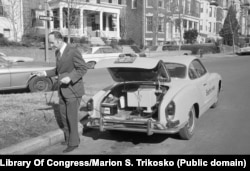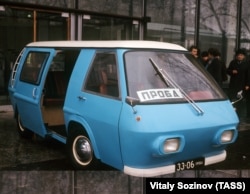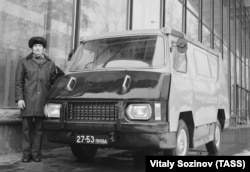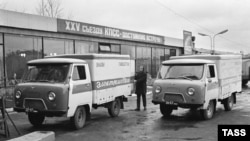In the winter of 1973-1974, gasoline was so scarce that American truckers short of fuel blocked highways in protest and in Europe the horse and cart returned to some city streets.
Such was the squeeze on consumers that one New Jersey woman warned that “the people are on the verge of revolting.”
The cause was an oil embargo imposed by several Middle Eastern petro-states targeting Western countries that were supporting Israel during the 1973 Yom Kippur War.
The solution, it seemed, was to urgently develop electric vehicles (EVs) that could run without the gasoline that had quadrupled in price in the space of a few months.
Electric cars were not a new concept in the 1970s. At the beginning of the 20th century, around one-third of vehicles driving on American roads were battery-powered.
The first generation of electric vehicles were easy to start and quieter and cleaner than their steam- and gasoline-powered counterparts. But early EVs were expensive to produce and, critically, limited in range.
As the gasoline engine evolved past the cumbersome crank-handle era, and networks of new roads beckoned drivers to go on long-distance adventures in the early 1900s, the gasoline-powered car began to pull ahead as the favored consumer choice.
When automotive producer Henry Ford opted for a gasoline motor in his revolutionary Model T, electric and steam-powered cars were left behind.
For the next 50 years, the EV remained a largely obsolete technology.
In 1973, Arab oil-producing countries launched an export embargo in response to U.S. support for Israel during the Yom Kippur War. The subsequent energy crisis sparked a burst of development that led, briefly, to the return of the EV in 1974.
Several photographs held in U.S. and Russian archives and reproduced in this gallery demonstrate the year battery-powered vehicles zipped unexpectedly back into view.
An electric car proponent explained the return of the EV to a U.S. journalist in April 1974:
“The energy crisis has turned on the electric vehicle...” he said. “People realize there is not an unlimited supply of oil, and they are going to stay scared.”
The U.S.S.R. openly supported the 1973 Arab war on Israel, and the Soviet economy was relatively unscathed by the “oil shock.” But as Western countries raced to develop EVs, the future of transport looked increasingly likely to be electric.
In April 1974, the Kremlin’s automotive ministry decreed that electric vehicle development was a priority.
Pavel Bludenov, a Dubai-based Russian automotive journalist, says that the Soviet Union was in some ways well-placed to push the development of electric vehicles in the 1970s.
“The big difference between Western and Soviet cars (electric or gasoline),” he says, was that the U.S.S.R.’s engineers “didn’t need to think about efficiency and commercial profitability.”
Unlike Western engineers who needed to tick every conceivable box to appeal to the free market, their Soviet counterparts had only to impress a small panel of bureaucrats for success.
But although several Soviet prototype EVs were rolled out amid the 1970s oil crisis, none ended up being approved for mass production.
Bludenov says Soviet engineers soon arrived at “the same problems as electric vehicles in other countries: The technology didn't allow for these models to be accessible and practical.”
Engineers of the 1970s were hitting the roadblocks their predecessors had faced 50 years before when designing EVs: short driving ranges, high production costs, and the hefty weight of batteries. Electricity was so stringently allocated that at least one Soviet EV had its own autonomous combustion engine to fuel its heating system.
In March 1974, Arab governments ended the oil embargo that had shaken up the world and prices soon fell. Although further oil shocks would come in the 1970s, electric car production returned to being a tiny niche industry.
It had become clear that battery technology simply hadn't come far enough in the previous half century to avoid the original pitfalls of electric vehicles.
It would take the groundbreaking development of powerful and comparatively lightweight lithium-ion batteries to convince engineers, including tech billionaire Elon Musk, to once more explore the possibility of powering cars with electricity.
The first lithium-ion battery was introduced in 1991, the same year the Soviet Union collapsed. Automotive manufacturers in Russia and elsewhere in the former Soviet Union were focused on survival at the time rather than expensive innovation.
Bludenov says it is still possible to find traces of the development burst of Soviet-made EVs half a century ago.
While visiting the Rostselmash agricultural equipment plant in Rostov-on-Don in 2021, he says, "I was surprised to see Soviet-era technical trucks running on electric power there! They are still in operation."













